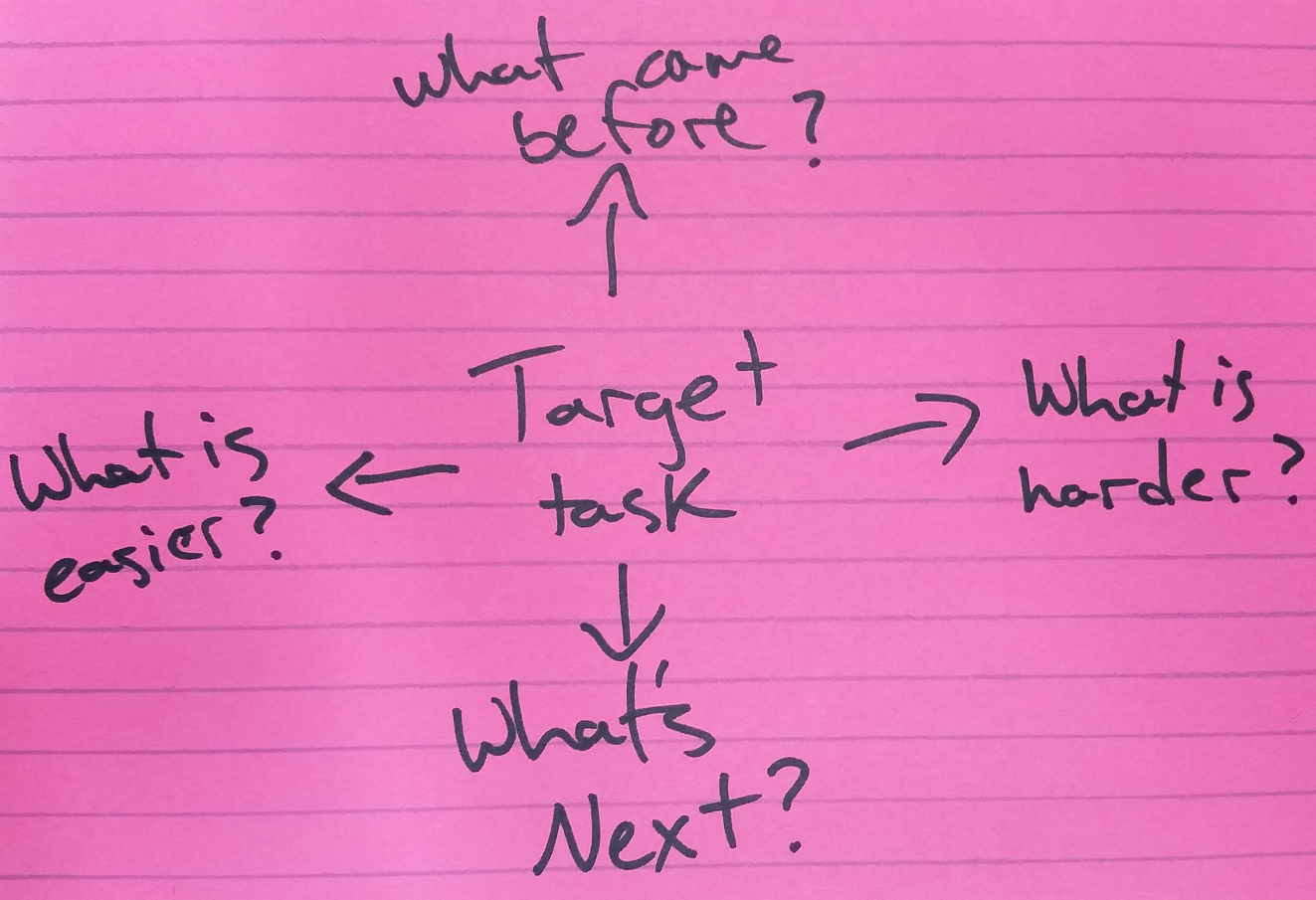9 Adjusting On The Fly
Adjusting Your Instruction During a Lesson
By Terry Greene and Jodie Black, Fleming College
This skill is the basic footwork of pedagogy. It keeps you light on your feet and ready for anything. Okay, not anything. Ready for lots of things, though. There is really not much to it but thinking ahead and planning.
The Authors
Two Patchbook Patchers are involved here:
- Terry Greene is a Learning Technology Specialist at Fleming College and he finds it weird to write about himself in the third person. He has a M.Sc. in Instructional Design & Technology from the University of North Dakota and a B.Ed. from The University of Alberta.
- Jodie Black is a Teaching & Learning Specialist (a.k.a. pedagogical whisperer) in the Learning Design & Support Team at Fleming College. She also teaches in the Community Integration through Cooperative Education program. She has a B.A. in History, a B.Ed. in Special Education and, if you’re reading this after September 2017, she probably also has an M.Ed. in Curriculum.
The Tips
Here are some (overly simplified) things that may happen when you and your students are J.T.L.A. (Just Teaching & Learning Along) during a class:
- You get through all your planned activities too quickly.
- You are not getting through your planned activities quickly enough.
- You realize that everyone kind of already knows this stuff.
- You realize that no one really knows the stuff you need to know before learning the thing you need them to learn.
- You have some students flying through everything and others getting stuck.
You can try to avoid some of this by using this loose framework when planning:

When you are planning out your learning activities, take a moment to think of some alternatives.
- What is the target task?
- Is there a ‘pre-requisite’ to that task?
- What is an easier version of that task?
- What is a harder version of that task?
- What is the next task?
Let’s try a couple of examples. One from Terry and one from Jodie.
Terry’s example:
Being a Learning Technology Specialist, Terry is going to be predictable and choose a basic digital skill to use as an example: inserting a hyper link into a WordPress page.
- What is the basic task? Adding a hyper link to a WordPress page
- What is pre-requisite to this task? Getting to edit mode, Finding the URL, copy/pasting.
- What is an easier version of that task? Copy/pasting links from other pages
- What is a harder version of that task? Changing the text, using keyboard shortcuts, doing it faster, making it open in a new tab
- What is the next task? Making an image a link
Jodie’s example:
Jodie teaches a course called Community Pathways and Career Exploration in which they spend time developing learning skills, including various executive functioning skills. Jodie’s example here will be a task that requires executive function skillz: breaking down complex assignments.
- What is the basic task? Breaking down complex assignments
- What is pre-requisite to this task? Identifying the components of the assignment, estimating time needed to complete components, accurately understanding the expectations and deliverables
- What is an easier version of that task? Breaking down less complex assignments, do one as a group, do a non-academic ‘assignment’, identify the components for them, have a worked example ready
- What is a harder version of that task? do a more complex assignment, Map out and schedule the tasks, break it down into smaller chunks, do it faster & more accurately.
- What is the next task? Carrying out the plan, other time managements skills like setting up a study schedule.
TL;DR (Too long; didn’t read)
What? This was too long to read? It’s a pretty short Patch! Well okay, here’s the tl;dr:
Basically, to have in mind what is easier, what is harder, and what is next allows you to more easily adjust your instruction on the fly and gives learners a more individualized learning path. It may not work in all learning contexts, but it could be a helpful mindset.

“120328 Boxing-20” flickr photo by fiverlocker https://flickr.com/photos/fiverlocker/6882942276 shared under a Creative Commons (BY-SA) license



